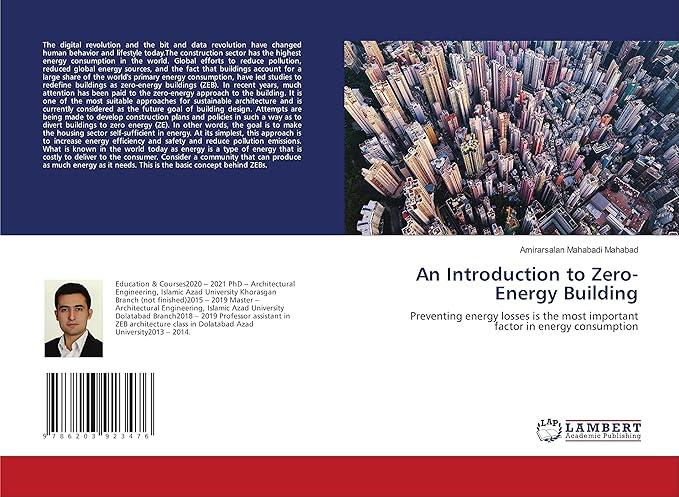کتاب Assessing Interactional Competence through paired speaking tasks
۱۸۴,۰۰۰ تومان Original price was: ۱۸۴,۰۰۰ تومان.۱۳۶,۱۶۰ تومانCurrent price is: ۱۳۶,۱۶۰ تومان.
| تعداد صفحات | 92 |
|---|---|
| انتشارات |

کتاب Assessing Interactional Competence through Paired Speaking Tasks – ارزیابی شایستگی تعاملی از طریق وظایف گفتاری دوتایی
کتاب Assessing Interactional Competence through Paired Speaking Tasks به بررسی رویکردهای نوین در ارزیابی مهارتهای تعاملی در مکالمات میپردازد. این اثر بر شیوههای بهکارگیری وظایف گفتاری دوتایی (paired speaking tasks) برای سنجش شایستگیهای زبانی و ارتباطی تمرکز دارد و راهنمایی جامع برای پژوهشگران، معلمان زبان و ارزیابان ارائه میدهد.
درباره کتاب Assessing Interactional Competence through Paired Speaking Tasks
این کتاب با رویکردی نوآورانه، به ارزیابی مهارتهای زبانی و تعاملات بین فردی میپردازد. نویسنده در این اثر، مفاهیم شایستگی تعاملی و اهمیت آن در مکالمات واقعی را توضیح میدهد و روشهای بهکارگیری وظایف گفتاری دوتایی را بهعنوان ابزاری موثر برای سنجش این مهارتها بررسی میکند. این اثر، با استفاده از دادههای تحقیقاتی و مثالهای عملی، دیدگاههای جامعی در مورد طراحی و اجرای آزمونهای تعاملی ارائه میدهد.
موضوعات کلیدی کتاب
- شایستگی تعاملی چیست؟ تعریف و اهمیت این مهارت در مکالمات روزمره و محیطهای آموزشی.
- وظایف گفتاری دوتایی: چگونگی طراحی و بهکارگیری این وظایف برای ارزیابی مهارتهای تعاملی.
- معیارهای ارزیابی: بررسی شاخصهایی که شایستگی تعاملی را بهطور دقیق و علمی اندازهگیری میکنند.
- تحلیل دادههای گفتاری: ارائه روشهایی برای تحلیل تعاملات ضبطشده و استخراج نتایج مفید.
- کاربردهای آموزشی و پژوهشی: نقش این کتاب در بهبود آموزش زبان و طراحی آزمونهای استاندارد.
ویژگیهای برجسته کتاب Assessing Interactional Competence through Paired Speaking Tasks
- پوشش جامع مفاهیم: از مبانی نظری تا کاربردهای عملی در ارزیابی مهارتهای تعاملی.
- مطالعات موردی و مثالها: ارائه نمونههای واقعی برای درک بهتر مفاهیم و روشهای ارزیابی.
- رویکردی کاربردی: مناسب برای معلمان، ارزیابان و پژوهشگران حوزه آموزش زبان.
- تحلیل عمیق: استفاده از دادههای واقعی برای تحلیل تعاملات زبانی و بهبود فرآیند ارزیابی.
چرا کتاب Assessing Interactional Competence through Paired Speaking Tasks را بخوانید؟
این کتاب برای کسانی که به دنبال ارتقای دانش و مهارت خود در ارزیابی تعاملات زبانی هستند، منبعی ارزشمند است. با مطالعه این اثر، میتوانید به طراحی و اجرای آزمونهای موثرتر و دقیقتر بپردازید و شایستگیهای زبانی را بهطور جامعتر بسنجید.
مخاطبان کتاب Assessing Interactional Competence through Paired Speaking Tasks
- معلمان زبان: برای طراحی آزمونهای موثر و ارزیابی دقیقتر مهارتهای زبانی.
- پژوهشگران آموزش زبان: بهعنوان منبعی علمی برای تحقیقات مرتبط با شایستگی تعاملی.
- دانشجویان زبانشناسی و آموزش زبان: جهت درک عمیقتر از مفاهیم ارزیابی زبانی.
- طراحان آزمونهای زبانی: برای بهبود استانداردها و ارتقای کیفیت آزمونها.
سفارش کتاب Assessing Interactional Competence through Paired Speaking Tasks
برای خرید کتاب Assessing Interactional Competence through Paired Speaking Tasks و دسترسی به جدیدترین رویکردهای ارزیابی مهارتهای تعاملی، به بخش فروشگاه سایت مراجعه کنید یا با ما تماس بگیرید. این کتاب به شما کمک میکند تا درک بهتری از تعاملات زبانی داشته باشید و در فرآیند آموزش و ارزیابی زبان پیشرو باشید.
📘 پرسش و پاسخ درباره کتاب Assessing Interactional Competence through Paired Speaking Tasks
🔹 فصل اول: مقدمه
❓ ۱. مسئله اصلی مطرحشده در این کتاب چیست؟
🔹 مسئله اصلی این کتاب بررسی ارزیابی شایستگی تعاملاتی در آزمونهای گفتاری جفتی است. این مطالعه به شناسایی و تحلیل عواملی میپردازد که بر شایستگی تعاملاتی شرکتکنندگان در وظایف گفتاری جفتی تأثیر میگذارند.
❓ ۲. اهداف مطالعه چیست؟
🔹 اهداف این مطالعه عبارتند از: ارزیابی شایستگی تعاملاتی از طریق آزمونهای گفتاری جفتی، شناسایی عوامل مؤثر بر این شایستگیها، و بررسی تأثیرات مختلف وظایف و گفتگوی شرکتکنندگان در ارزیابی شایستگی تعاملاتی.
🔹 فصل دوم: مرور ادبیات
❓ ۳. شایستگی ارتباطی چیست؟
🔹 شایستگی ارتباطی به توانایی فرد در استفاده مؤثر از زبان در موقعیتهای مختلف ارتباطی اشاره دارد. این مفهوم شامل مهارتهای گفتاری، شنیداری، و درک متقابل است.
❓ ۴. شایستگی تعاملاتی در آزمونهای گفتاری جفتی چیست؟
🔹 شایستگی تعاملاتی به توانایی شرکتکنندگان در تعامل و ایجاد ارتباط مؤثر در حین انجام وظایف گفتاری جفتی اشاره دارد. این شامل مهارتهایی مانند پاسخدهی، اصلاحات خود، و هماهنگی با شریک گفتاری است.
❓ ۵. تأثیرات وظایف و رابطان در آزمونهای گفتاری جفتی چیست؟
🔹 وظایف و رابطان میتوانند تأثیر زیادی بر شایستگی تعاملاتی افراد داشته باشند. نوع وظیفه (مثلاً تکالیف آزاد یا هدایتشده) و ویژگیهای شریک گفتاری (مانند سطح زبان یا تعاملات اجتماعی) میتوانند بر نتایج ارزیابیهای شایستگی تعاملاتی تأثیر بگذارند.
🔹 فصل سوم: روششناسی
❓ ۶. روششناسی تحقیق چگونه است؟
🔹 این تحقیق شامل جمعآوری دادههای مربوط به شایستگی تعاملاتی از طریق آزمونهای گفتاری جفتی است. شرکتکنندگان در آزمونها قرار میگیرند و دادههای حاصل از تعاملات آنها تجزیه و تحلیل میشود.
❓ ۷. فرآیند تحقیق چگونه انجام شده است؟
🔹 فرآیند تحقیق شامل انتخاب مشارکتکنندگان، طراحی وظایف گفتاری جفتی، و تحلیل دادههای جمعآوریشده از تعاملات شرکتکنندگان است. این دادهها به منظور بررسی شایستگی تعاملاتی آنها بررسی و تحلیل میشود.
🔹 فصل چهارم: تحلیل دادهها و نتایج
❓ ۸. چه نتایجی از تحقیق به دست آمد؟
🔹 نتایج این تحقیق شامل شناسایی عواملی است که بر شایستگی تعاملاتی در آزمونهای گفتاری جفتی تأثیر دارند. علاوه بر این، تحقیق نشان داد که نوع وظیفه و ویژگیهای شریک گفتاری تأثیر زیادی بر ارزیابیها دارند.
❓ ۹. چگونه تحقیق به سوالات پژوهشی پاسخ داده است؟
🔹 تحقیق به سه سوال اصلی پاسخ داده است: اول، نحوه تأثیر وظایف و تعاملات بر شایستگی تعاملاتی؛ دوم، تأثیرات زبان و تعاملات اجتماعی بر شایستگی تعاملاتی؛ و سوم، ارزیابیهای مختلف از شایستگی تعاملاتی در موقعیتهای مختلف.
🔹 فصل پنجم: بحث، نتایج و پیشنهادات
❓ ۱۰. یافتههای اصلی این تحقیق چه بوده است؟
🔹 یافتههای اصلی نشان میدهند که شایستگی تعاملاتی بیشتر تحت تأثیر نوع وظایف و ویژگیهای شریک گفتاری قرار دارد. همچنین، تعاملات بیشتر و اصلاحات خود به شایستگیهای بالاتر در وظایف گفتاری جفتی منجر میشوند.
❓ ۱۱. چه پیشنهاداتی برای تحقیقات آینده ارائه شده است؟
🔹 پیشنهادات برای تحقیقات آینده شامل بررسی بیشتر تأثیرات فرهنگی، اجتماعی و زبانشناسی بر شایستگی تعاملاتی و همچنین طراحی آزمونهای گفتاری پیچیدهتر برای ارزیابی بهتر شایستگیهای تعاملاتی است.
❓ ۱۲. محدودیتهای مطالعه چه بودند؟
🔹 محدودیتهای این مطالعه شامل تعداد کم مشارکتکنندگان و تمرکز بر یک نوع خاص از وظایف گفتاری جفتی بودند که ممکن است نتایج را تحت تأثیر قرار دهند.
📌 نکات کلیدی:
- شایستگی تعاملاتی به توانایی افراد در تعامل مؤثر و برقراری ارتباط در وظایف گفتاری جفتی اشاره دارد.
- این تحقیق نشان میدهد که نوع وظیفه و ویژگیهای شریک گفتاری تأثیر زیادی بر شایستگی تعاملاتی دارند.
- پیشنهادات برای تحقیقات آینده شامل بررسی تأثیرات فرهنگی و اجتماعی، و طراحی آزمونهای پیچیدهتر است.
| تعداد صفحات | 92 |
|---|---|
| انتشارات |
محصولات مشابه
-
کتاب An Introduction to Zero-Energy Building
۱۵۴,۰۰۰ تومانOriginal price was: ۱۵۴,۰۰۰ تومان.۱۱۱,۴۹۶ تومانCurrent price is: ۱۱۱,۴۹۶ تومان. -
کتاب DoS Attacks and Intelligent Neural Network
۱۴۰,۰۰۰ تومانOriginal price was: ۱۴۰,۰۰۰ تومان.۱۰۱,۳۶۰ تومانCurrent price is: ۱۰۱,۳۶۰ تومان. -
کتاب Compound Effect
۱۴۰,۰۰۰ تومانOriginal price was: ۱۴۰,۰۰۰ تومان.۱۰۱,۳۶۰ تومانCurrent price is: ۱۰۱,۳۶۰ تومان. -
کتاب Unreliable numerical solutions
۲۴۰,۰۰۰ تومانOriginal price was: ۲۴۰,۰۰۰ تومان.۱۶۹,۹۲۰ تومانCurrent price is: ۱۶۹,۹۲۰ تومان.






